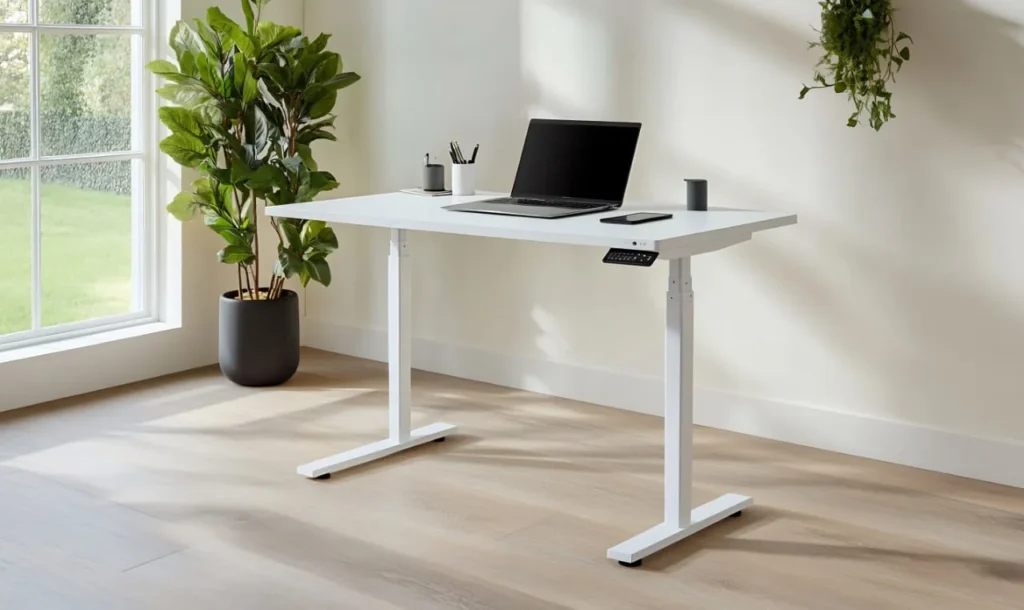Spending long hours sitting down at work is something most of us do now, but it’s also a big reason why so many people have bad posture and ongoing back pain. Many professionals find themselves stuck in one position for most of their day, often leading to tight muscles, a misaligned spine, and insufficient blood flow. This is where standing desks shine—they provide a practical way to keep moving and reduce discomfort while working. These desks aren’t just a passing office fad; they’re a solution that tackles many common physical health issues head-on.
Enabling Better Posture Throughout the Day
One of the best things about a standing desk is how it helps you stand up straighter. When set up just right, you can place your screen at eye level and keep your arms bent comfortably at 90 degrees. This cuts down on the tension in your neck and shoulders. Hours of sitting often lead to slouching or hunching, especially if your screen or keyboard isn’t positioned correctly.
Standing up helps you sit or stand straighter and gives your core muscles a gentle workout, supporting your spine. Doing this regularly helps train your body to remember good posture. It can cut down on aches and pains related to poor alignment. So, making even little tweaks to how you hold yourself throughout the day can pay off for your spine’s health in the long run.
Reducing Pressure on the Lower Back
Lower back pain is common for office workers, often because they sit in one spot for too long. Standing desks let you switch things up, moving between sitting and standing, which helps take the pressure off your lower back. Changing your posture like this can also reduce the strain on your spinal discs and ease tension.
Swapping to a standing desk now and then during the day is a great way to give your back a break from the strain of sitting. Shifting your weight and moving around helps prevent stiffness and soreness. Standing for a few hours daily makes a real difference in how their back feels.
Promoting Healthy Movement and Circulation
Standing desks do more than just help you stand up straight; they also encourage better blood flow and keep you moving. Even small changes like shifting your weight or stretching can work your muscles and boost circulation when you’re on your feet. Sitting too long can slow blood flow and tire you, whereas standing helps keep your body sharp and energetic.
This extra movement helps you find a more natural and comfortable way to position your hips, knees, and spine. People who use standing desks often say they feel less tired and more productive because of the physical activity. Even standing for short periods can do wonders for your overall health and help prevent long-term muscle and joint aches.
Making the Transition Smooth and Sustainable
If you’re new to using a standing desk, it’s a good idea to start slowly by switching between standing and sitting every 30-60 minutes. This gradual approach gives your body time to get used to it and helps you avoid tiredness. Wearing supportive footwear and an anti-fatigue mat can make standing more comfortable and easier to stick with in the long term. Using your standing desk regularly and maintaining good posture can be a simple but effective way to boost your health and productivity at work.






